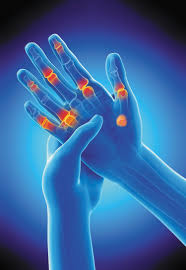Knuckle joint pain can be an uncomfortable and frustrating condition that affects your day-to-day activities. Whether it’s due to arthritis, injury, or another underlying condition, understanding the causes and treatments available can help manage the pain effectively. In this article, we will delve into the various causes of knuckle joint pain, explore potential treatments, and discuss how appropriate footwear can alleviate some of the discomfort associated with this condition.
Knuckle joint pain can arise from several causes. Understanding these causes is crucial in determining the most effective course of treatment. Here are some of the most common reasons people experience pain in their knuckles:
Arthritis
One of the leading causes of knuckle joint pain is arthritis, a condition characterised by inflammation of the joints. There are different types of arthritis, with osteoarthritis and rheumatoid arthritis being the most prevalent. Osteoarthritis is often due to wear and tear, while rheumatoid arthritis is an autoimmune disease causing the body to attack its joint tissues.
Injuries
Injuries to the fingers, such as fractures, dislocations, or sprains, can also lead to knuckle joint pain. These injuries often result in swelling, bruising, and a reduced range of motion, contributing to discomfort and pain.
Neuropathy
Neuropathy refers to nerve damage, which can also lead to pain in the finger joints. People with diabetes often experience neuropathy as a complication, leading to discomfort in their extremities, including fingers and toes.
Other Conditions
Other medical conditions, such as gout or lupus, can also cause knuckle joint pain. These conditions typically involve inflammation and require specific medical attention.
Symptoms of Knuckle Joint Pain
The symptoms of knuckle joint pain can vary depending on the underlying cause. Common symptoms include:
-
Swelling around the joint
-
Stiffness and reduced range of motion
-
Tenderness or discomfort when touching the joint
-
Visible deformities in severe cases
It’s important to recognise these symptoms early and consult with a healthcare professional for proper diagnosis and treatment.
Treatment Options for Knuckle Joint Pain
Treating knuckle joint pain involves addressing the underlying cause and managing symptoms. Here are some common treatment options:
Medication
Over-the-counter pain relievers, such as ibuprofen or acetaminophen, can help alleviate pain and reduce inflammation. In cases of arthritis, disease-modifying antirheumatic drugs (DMARDs) or biologics may be prescribed by a doctor.
Physical Therapy
Physical therapy can be beneficial in improving joint function and reducing pain. A physical therapist can provide exercises to strengthen the muscles around the joint and improve flexibility.
Lifestyle Changes
Making certain lifestyle changes can also help manage knuckle joint pain. This includes maintaining a healthy weight to reduce stress on the joints and incorporating a balanced diet rich in anti-inflammatory foods.
Home Remedies
Applying ice packs to the affected area can help reduce swelling and numb the pain. Additionally, warm compresses can promote blood flow and relieve stiffness.
The Role of Footwear in Managing Joint Pain
Footwear can play a crucial role in managing joint pain, especially for individuals with conditions like arthritis or diabetes. Proper shoes can provide support and cushioning, reducing stress on the joints. Here’s how specific types of footwear can help:
Diabetic Footwear
For individuals with diabetes, neuropathy shoes are designed to prevent complications. These shoes offer a wide toe box, extra padding, and no seams to minimise pressure points and prevent injuries.
Arthritis Shoes
Arthritis shoes are crafted to provide ample support and cushioning, helping to alleviate pain in the joints. These shoes often feature rocker soles that facilitate natural foot movement and reduce joint stress.
Choosing the Right Footwear
When selecting footwear, ensure that the shoes fit well and provide adequate support. Look for shoes with adjustable closures, cushioned insoles, and a stable heel counter to enhance comfort and support.
Preventing Knuckle Joint Pain
While not all cases of knuckle joint pain can be prevented, certain measures can reduce the risk:
-
Protect Your Joints: Use protective gear during physical activities to prevent injuries.
-
Stay Active: Engage in regular exercise to maintain joint flexibility and strength.
-
Manage Chronic Conditions: If you have a chronic condition like diabetes, work with your healthcare provider to manage it effectively.
Conclusion
Knuckle joint pain can be a challenging condition, but understanding its causes and exploring treatment options can make a significant difference. Whether it’s through medication, physical therapy, or the right footwear, managing your symptoms is within reach. If you experience persistent or severe pain, consult with a healthcare professional for a personalised treatment plan. Remember, taking proactive steps today can lead to a more comfortable and active tomorrow.








